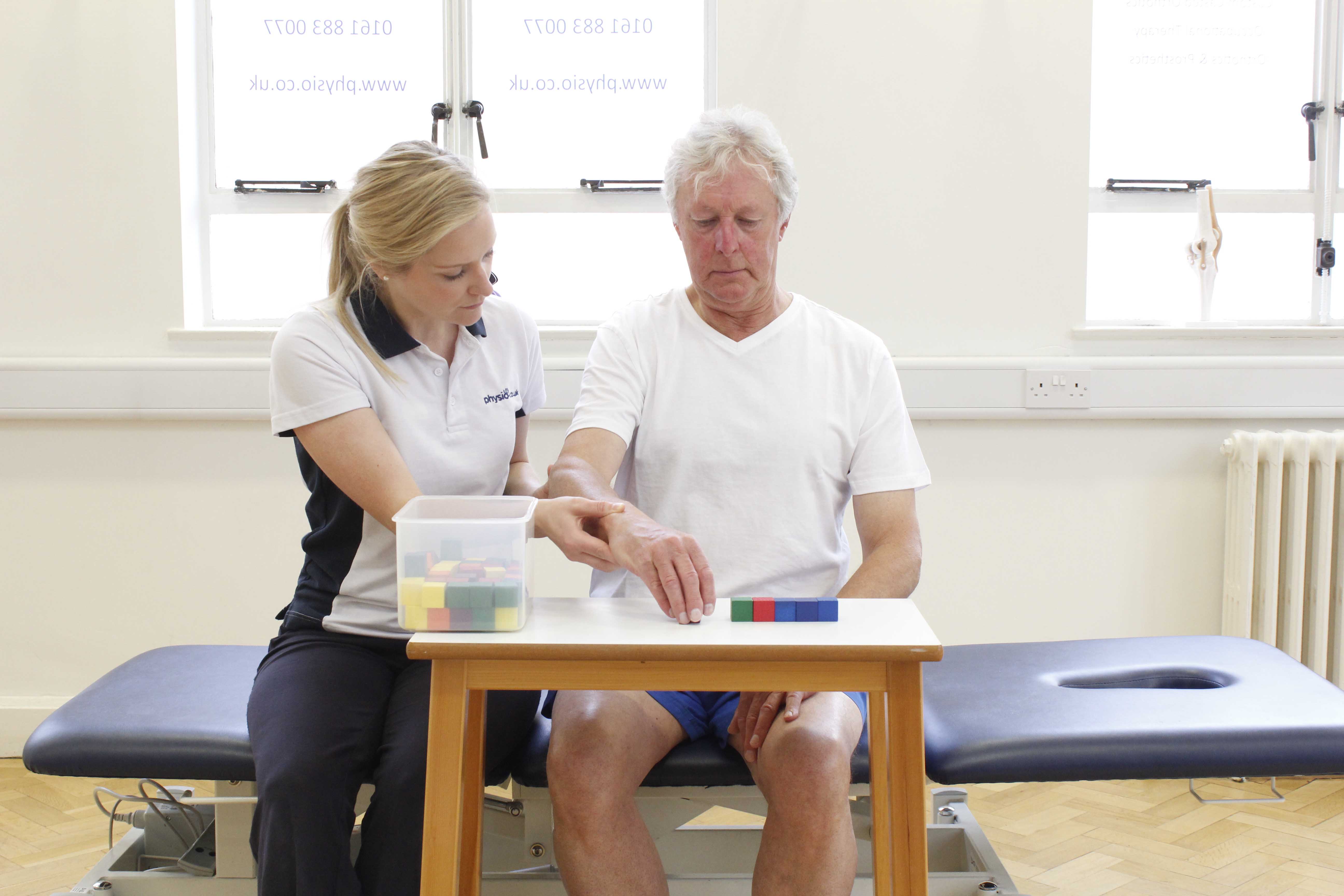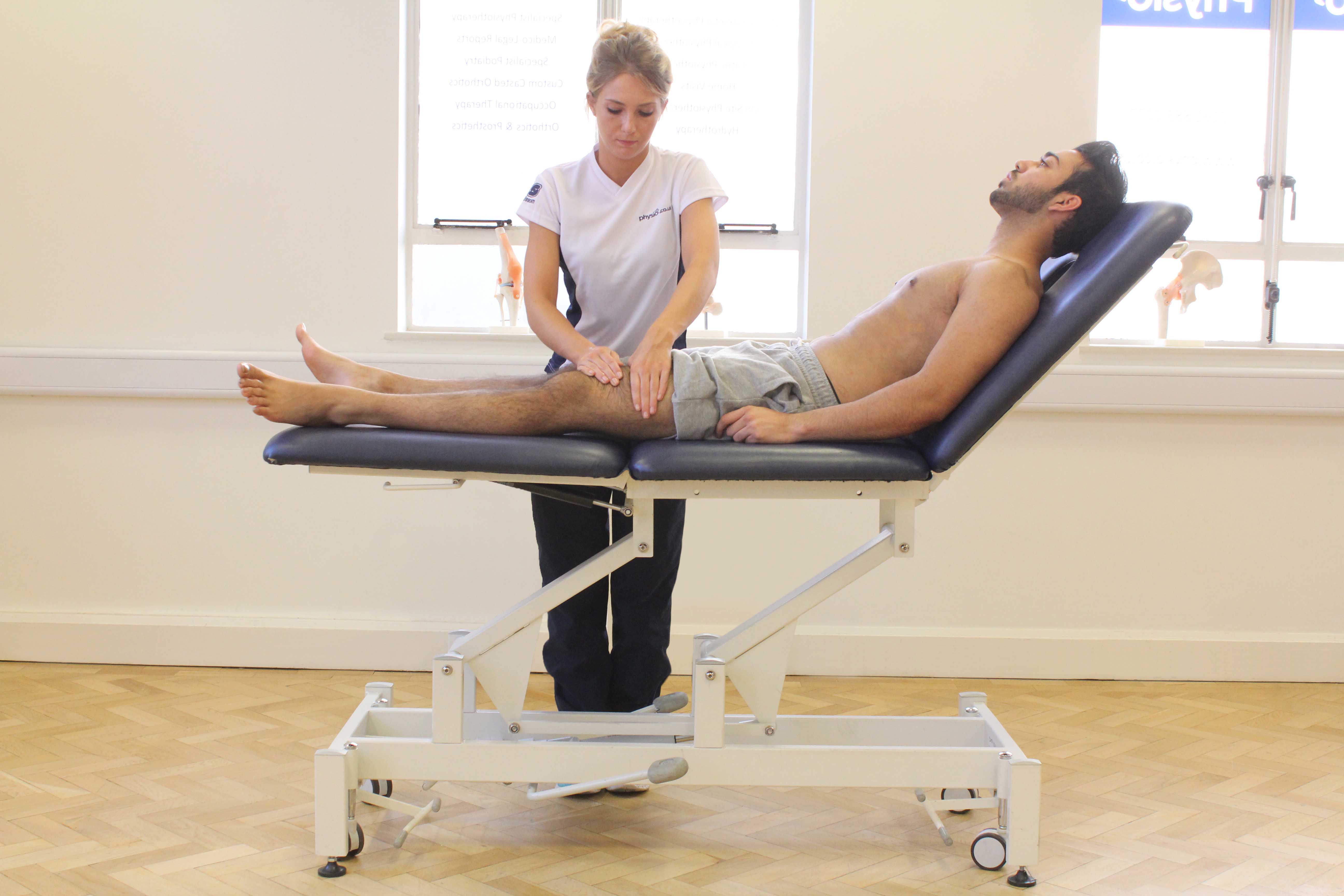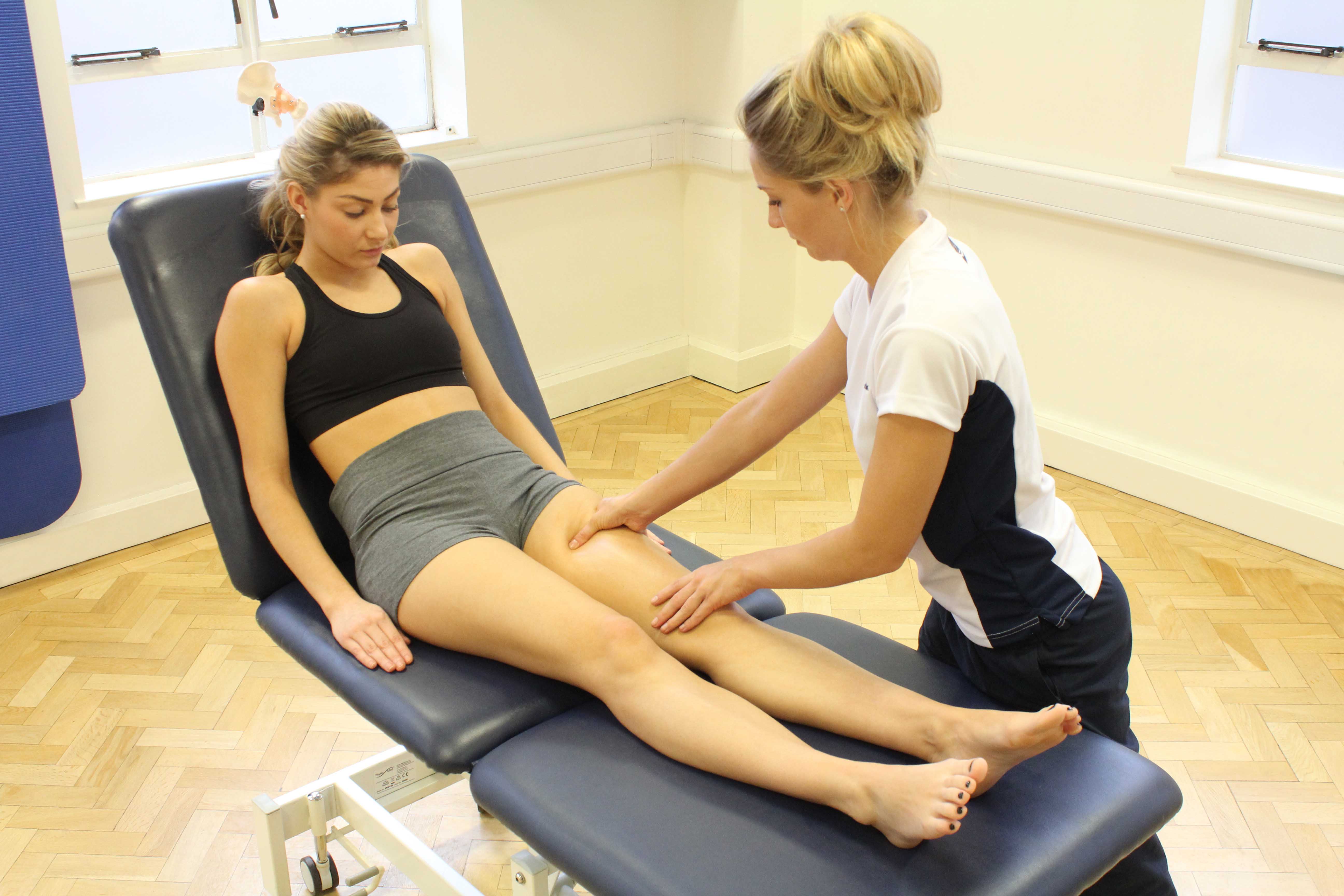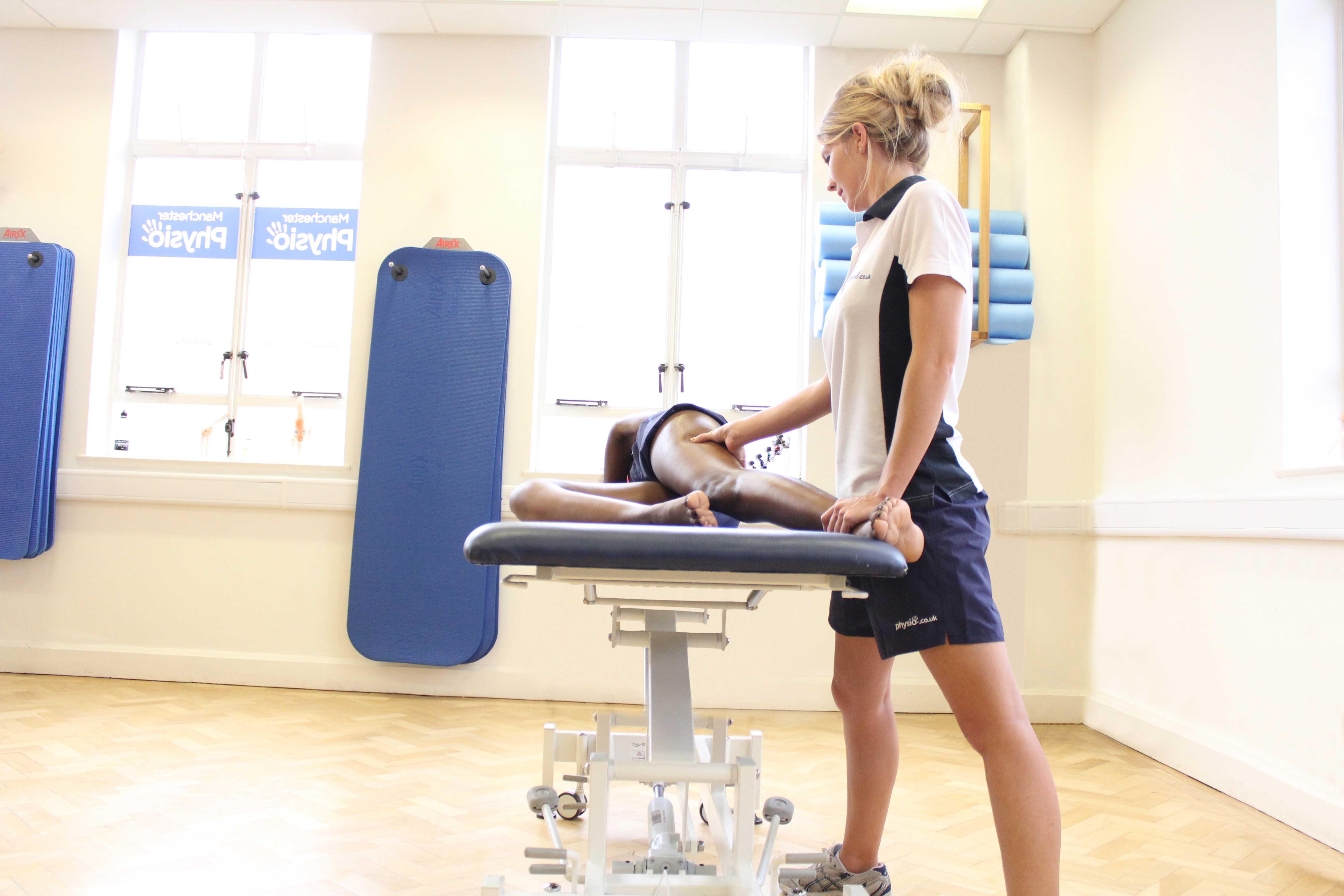Physiotherapy for Open reduction internal fixation (ORIF) of the femoral shaft
Open reduction internal fixation (ORIF) is a surgical procedure to treat a displaced fracture of the femoral shaft. The femur, or thigh bone, is a large and strong bone so it requires a substantial amount of force to fracture. It is surrounded by muscle and has a good blood supply so when disrupted, can result in significant bleeding.
The 3 types of femoral shaft fractures include:
- Type I - Spiral or transverse (most common): a twisting fracture
- Type II – Comminuted: the bone is broken into many pieces
- Type III – Open: the bone breaks the surface of the skin
The broken femur needs to be realigned (reduced). This can be done through surgery (open reduction).If the fracture is unstable or complicated fixation may be required to hold the broken ends of the bone in the correct position. This can be performed by Open Reduction Internal Fixation (ORIF) using steel screws, rod, plates, pins or K-wires to hold the broken bones in alignment.
ORIF surgery of the femoral shaft involves placing a nail through the bone. If the fracture is unstable the nail is anchored by locking screws.
 Above: Ttigger point massage of the hamstring muscles
Above: Ttigger point massage of the hamstring musclesSymptoms after ORIF
After your surgery you will experience pain, weakness, swelling , stiffness and loss of strength. During your hospital stay, you will see a physiotherapist who will assist you with a variety of bed exercises. You will be given a walking aid and encouraged to partially weight bear for the initial stages of your recovery.
 Above: Rolling soft tissue massage of the quadricep muscles
Above: Rolling soft tissue massage of the quadricep musclesPhysiotherapy after ORIF
Following your surgery, you will partially weight bear with crutches until an x-ray shows the fracture is fully united.After this you can fully weight bear. Because of the traumatic nature of this type of injury and the intensive surgical intervention required, soft tissue injury is common and may initially limit your function.
It is important, therefore,that physiotherapy treatment is commenced as soon as possible following surgery to prevent secondary complications and to restore ambulation and function as soon as possible.
Physiotherapy treatment will improve muscle strength and length, reduce pain and swelling and increase function with respect to gait and walking endurance.
Early weight bearing is encouraged as this speeds up fracture healing. Immediate weight bearing may also result in less time in hospital, decreased impairment and facilitate long term success following injury.
 Above: Soft tissue massage of the quadricep muscles
Above: Soft tissue massage of the quadricep musclesRehabilitation goals at Physio.co.uk will include:
- Restoring and maintaining full range of motion at the knee and the hip
- Strengthening of the quadriceps and hamstrings
- Re-education of normal gait
- Stretching tight muscles
- Promote independence with functional activities
1-6 weeks
At this stage weight bearing through your leg is limited to avoid excessive force on the fracture. During the first month of your physiotherapy programme with Physio.co.uk the main aims are to control your pain and swelling, passively improve range of motion at your knee and hip and partially weight bear through your leg.Treatment will also be focused on maintaining strength in your unaffected leg and your upper limbs. At this time the fracture is painful but it is crucial to get moving in a safe manner. Physiotherapy at this stage will include:
- Gentle hip and knee mobilisation as tolerated
- Passive (movement is assisted by physiotherapist) range of movement exercises
- Partial weight bearing exercises with either a walker or bilateral axillary crutches
- Crutch training
- Pain modulation
- Weight shifting activities
- Isometric (static) exercises for the quads and glutes
- Patella (knee cap) mobilisation
- Ankle strengthening exercises
- Hydrotherapy
6-12 weeks
During this stage of your rehabilitation your physiotherapy programme with Physio.co.uk will focus on weight bearing, gait re-education, improving proprioception (balance), strengthening muscles and increasing the range of movement in your hip and knee. Physiotherapy activities will include:
- Introduction of active (unassisted) range of movement exercises in the hip knee and ankle.
- Gravity-resisted standing hip and knee exercises
- Strengthening and stretching exercises for quadriceps, hamstrings and glutes
- Progression to full weight bearing activities
- Gait re –education
- Proprioception and balance training
- Stationary bicycle as tolerated
- Hydrotherapy
12- 18 weeks
After 3 months you should be fully weight bearing and physiotherapy treatment will focus on progressive resistive exercises at this stage. You will also have seen a marked improvement in the function of your hip and knee. The main goals of your physiotherapy programme with Physio.co.uk at this stage will now focus on the continuation of previous exercises, maintaining correct gait patterns, good stability, full range of movement and increased ambulation (walking) distance. The physiotherapy intervention with Physio.co.uk will include:
- Continuation of strengthening and stretching of leg muscles
- Patella mobilisations
- Full active range of movement exercises
- Ambulation exercise (walking)
- Gait re-education
- Proprioception (balance) training
- Stationary bicycle (increased resistance as tolerated)
- Focusing on activities of daily living and sporting activities
- Hydrotherapy
 Above: Friction massage applied to the illiotibial band
Above: Friction massage applied to the illiotibial bandA personal physiotherapy programme with Physio.co.uk will be developed in order to guarantee the return of full function in your hip and knee and get you back to a level you were previously.
For more information or to book an appointment call Physio.co.uk now on 0330 088 7800

 0330 088 7800
0330 088 7800


































